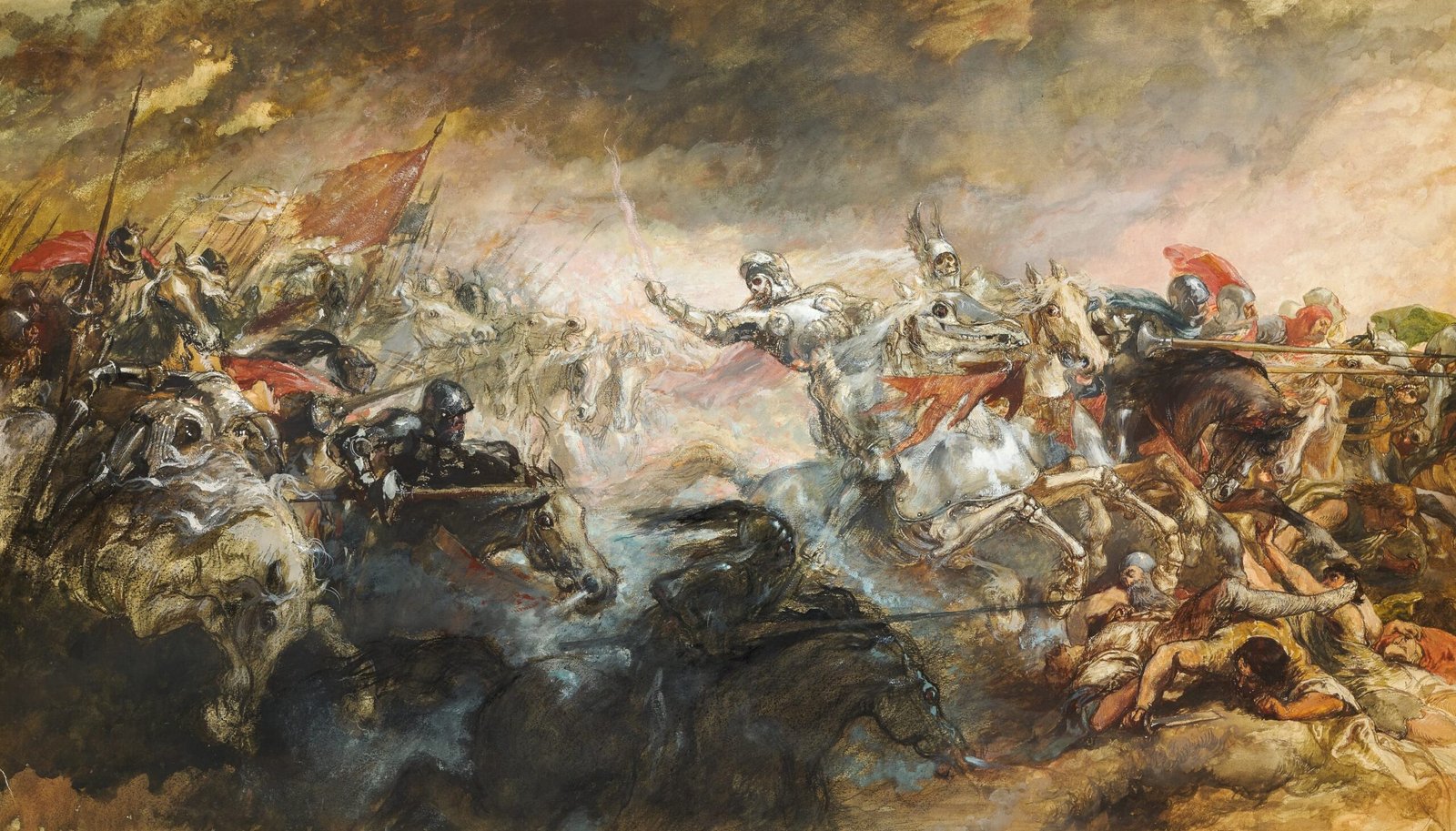Imagine a world where machines have the ability to comprehend and interpret what they see, just like humans. This captivating article will explore the fascinating realm of Artificial Intelligence (AI) and its remarkable capability to process images. Delve into an exploration of how AI algorithmically analyzes and extracts valuable information from visual data, unlocking a whole new level of understanding in the digital world. Discover the intricate processes involved, and prepare to be amazed at the ingenuity of AI as it transforms mere pixels into meaningful insights.

This image is property of images.unsplash.com.
Overview
What is AI?
Artificial Intelligence (AI) is a branch of computer science that focuses on creating intelligent machines capable of mimicking human behavior and performing tasks that typically require human intelligence. AI utilizes algorithms and statistical models to analyze complex data and make decisions or predictions. In the context of image processing, AI algorithms can understand and interpret visual data, allowing them to analyze, manipulate, and extract valuable information from images.
Understanding Image Processing in AI
Image processing in AI refers to the techniques and methodologies used to analyze, manipulate, and understand visual data. It involves training AI models to recognize objects, extract features, classify images, and generate new visual content. By leveraging various AI techniques, image processing enables machines to interpret and make sense of images, opening opportunities for applications in various domains, such as medical imaging, facial recognition, autonomous vehicles, and artificial creativity.
Training and Data Collection
Training AI Models
To process images effectively, AI models need to be trained using large-scale datasets that contain correctly labeled images. Training involves feeding these images into the model and adjusting the model’s parameters iteratively to minimize errors and improve performance. Through deep learning algorithms, AI models can learn patterns, features, and relationships within images, enabling them to make accurate predictions and classifications.
Data Collection for Image Processing
Collecting high-quality and diverse data is crucial for training AI models in image processing. Data collection involves acquiring a wide range of images that represent various classes, scenarios, and variations present in real-world scenarios. These images can be sourced from public datasets, curated databases, or crowdsourcing platforms. Additionally, data augmentation techniques, such as flipping, rotating, or altering image attributes, can be applied to increase the diversity of the training data, enhancing the model’s ability to handle different scenarios.
Preprocessing
Image Acquisition
Before processing images, AI systems need to acquire visual data from various sources, such as cameras, sensors, or existing image repositories. The acquisition process involves capturing or obtaining images in digital format, ensuring that they are suitable for further processing. This may include adjusting camera settings, calibrating sensors, or applying image stabilization techniques to minimize noise or distortions.
Image Cleaning and Enhancement
Raw images may contain imperfections, noise, or unwanted elements that can interfere with the accuracy of image processing algorithms. To address this, pre-processing techniques are applied to clean and enhance images. Image cleaning involves removing noise, artifacts, or irrelevant elements, while enhancement techniques, such as contrast adjustment, sharpening, or denoising filters, are used to improve image quality and highlight important details. Preprocessing aims to optimize the input images for better performance during subsequent stages of image processing.
Feature Extraction
Object Recognition
Object recognition is a fundamental task in image processing AI, enabling machines to identify and localize specific objects within images. By training AI models to recognize objects, such as cars, faces, or animals, they can accurately detect and classify them in new images. Object recognition utilizes a variety of techniques, including deep learning-based approaches, which leverage neural networks to learn and extract meaningful features from images.
Segmentation
Image segmentation involves dividing an image into different regions or objects based on their visual characteristics. This technique enables AI systems to separate and identify specific areas within an image, such as different organs in medical imaging or foreground and background elements in a scene. Segmentation can be performed using various algorithms, such as region-based approaches, edge-based techniques, or deep learning-based methods, allowing for precise analysis and understanding of image content.
Feature Extraction Techniques
Feature extraction is the process of extracting relevant information, patterns, or characteristics from images that can be used for classification, identification, or analysis purposes. AI algorithms leverage various feature extraction techniques, such as scale-invariant feature transform (SIFT), histogram of oriented gradients (HOG), or deep learning-based techniques like convolutional neural networks (CNN). These techniques enable AI models to capture and represent important image attributes, improving the accuracy and robustness of subsequent classification or prediction tasks.

This image is property of images.unsplash.com.
Classification and Prediction
Building Image Classification Models
Image classification is a common task in image processing AI, where AI models learn to categorize images into predefined classes or labels. To build image classification models, various approaches can be used, such as traditional machine learning algorithms like support vector machines (SVM) or more advanced deep learning techniques like convolutional neural networks (CNN). By training AI models with labeled images, they can learn to recognize and classify new images accurately.
Prediction Algorithms
In addition to classification, AI models can also utilize prediction algorithms to estimate or forecast specific attributes or outcomes based on image inputs. Predictive modeling techniques, such as regression, recurrent neural networks (RNN), or long short-term memory (LSTM) networks, enable AI systems to make predictions about image-related attributes, such as age, gender, disease progression, or future events. These predictions can be valuable in various applications, including medical diagnostics, forecasting market trends, or predicting traffic conditions.
Deep Learning and Convolutional Neural Networks
Convolutional Neural Networks (CNN)
Convolutional Neural Networks (CNN) are a type of deep learning algorithm specifically designed for image processing tasks. CNNs are inspired by the visual cortex structure in the human brain, as they contain layers that mimic the neurons’ ability to detect and understand visual patterns. By leveraging convolutional layers, pooling, and fully connected layers, CNNs can extract hierarchical features from images, enabling accurate classification, segmentation, and object recognition tasks.
CNN Architecture for Image Processing
The architecture of CNNs for image processing typically consists of multiple layers, including convolutional layers, pooling layers, and fully connected layers. Convolutional layers apply filters to an input image, enabling the network to capture local patterns and features. Pooling layers downsample the convolved features, reducing the computational complexity and enhancing the network’s translation invariance. Finally, fully connected layers aggregate the extracted features and make a prediction or classification based on the learned representations. CNN architectures can vary in depth, width, and connectivity, depending on the complexity of image processing tasks and the available computational resources.

This image is property of images.unsplash.com.
Transfer Learning
Benefits of Transfer Learning in Image Processing
Transfer learning is a technique that allows AI models to leverage knowledge learned from pre-trained models and apply it to new image processing tasks. By building upon the existing knowledge, transfer learning enables faster and more accurate training of models, especially when the available training data is limited. Transfer learning helps address the challenge of data scarcity and reduces the computational resources required for training, making it a beneficial approach in various image processing applications.
Techniques for Implementing Transfer Learning
Implementing transfer learning involves utilizing pre-trained models, such as CNN networks trained on large-scale image datasets like ImageNet, and fine-tuning them for specific image processing tasks. Fine-tuning refers to updating the pre-trained model’s parameters by training it on a new dataset or task-specific images. Alternatively, transfer learning can also involve using the pre-trained model’s learned features as input to train a new model from scratch. These techniques allow AI models to leverage the knowledge gained from pre-trained models and adapt it to specific image processing requirements effectively.
Image Generation
Image Synthesis
Image synthesis in AI involves generating new images that resemble real-world images or possess certain visual characteristics. This process can be achieved using generative models, which learn the patterns and features present in a training dataset and generate new images based on that knowledge. Image synthesis techniques like variational autoencoders (VAE) or generative adversarial networks (GANs) enable AI systems to create realistic, high-quality images that can be used in applications such as content generation, artistic rendering, or data augmentation for training new models.
Generative Adversarial Networks (GANs)
Generative Adversarial Networks (GANs) are a type of generative model that consists of a generator network and a discriminator network. The generator network learns to generate new images, while the discriminator network aims to distinguish between real and generated images. Through an adversarial training process, the generator network gradually improves its ability to generate realistic-looking images that can deceive the discriminator network. GANs have revolutionized image synthesis tasks, enabling AI systems to create highly detailed and diverse images with remarkable visual fidelity.
Applications
Medical Imaging
Image processing AI has significant applications in the field of medical imaging. It enables accurate diagnosis, detection, and characterization of diseases, assisting healthcare professionals in identifying abnormalities in medical images, such as X-rays, MRI scans, or histopathological slides. AI models trained on large-scale medical imaging datasets can analyze images, detect anomalies, and even predict disease progression. This technology has the potential to improve patient outcomes, reduce diagnostic errors, and contribute to personalized medicine.
Facial Recognition
Facial recognition is another application of image processing AI that has gained popularity in recent years. AI models can learn to detect and recognize human faces in images or real-time video streams. This technology has various applications, including identity verification, access control systems, surveillance systems, or emotion analysis. Facial recognition AI can analyze and match facial features, allowing for fast and reliable identification of individuals in a wide range of scenarios.
Autonomous Vehicles
Image processing AI plays a critical role in enabling autonomous vehicles to perceive and navigate their surroundings. By analyzing real-time sensor data, such as images from cameras or LiDAR scans, AI models can identify and interpret objects, road signs, lane markings, and other crucial elements in the environment. This information is then used for making decisions, such as object detection, lane keeping, or collision avoidance. Image processing AI is essential for ensuring the safety and efficiency of autonomous vehicles.
Artificial Creativity and Design
Image processing AI has also enabled artificial creativity and design, allowing machines to generate novel and visually appealing content. AI models can learn from vast collections of existing artwork, photographs, or designs and generate new content that resembles the learned styles or characteristics. This technology has been employed in creating artwork, graphic design, product prototypes, and even in fashion and interior design. By leveraging image processing AI, creative industries can explore new possibilities in content creation and design.
Conclusion
Advancements in image processing AI have revolutionized the field of computer vision and opened up numerous opportunities in various domains. The ability to analyze, interpret, and manipulate visual data has allowed machines to perceive the world in ways previously reserved for humans. From medical imaging and facial recognition to autonomous vehicles and artificial creativity, image processing AI continues to evolve and contribute to advancements in technology and society. As the field progresses, we can expect further breakthroughs and applications that will shape the future of image processing AI and its impact on our daily lives.
